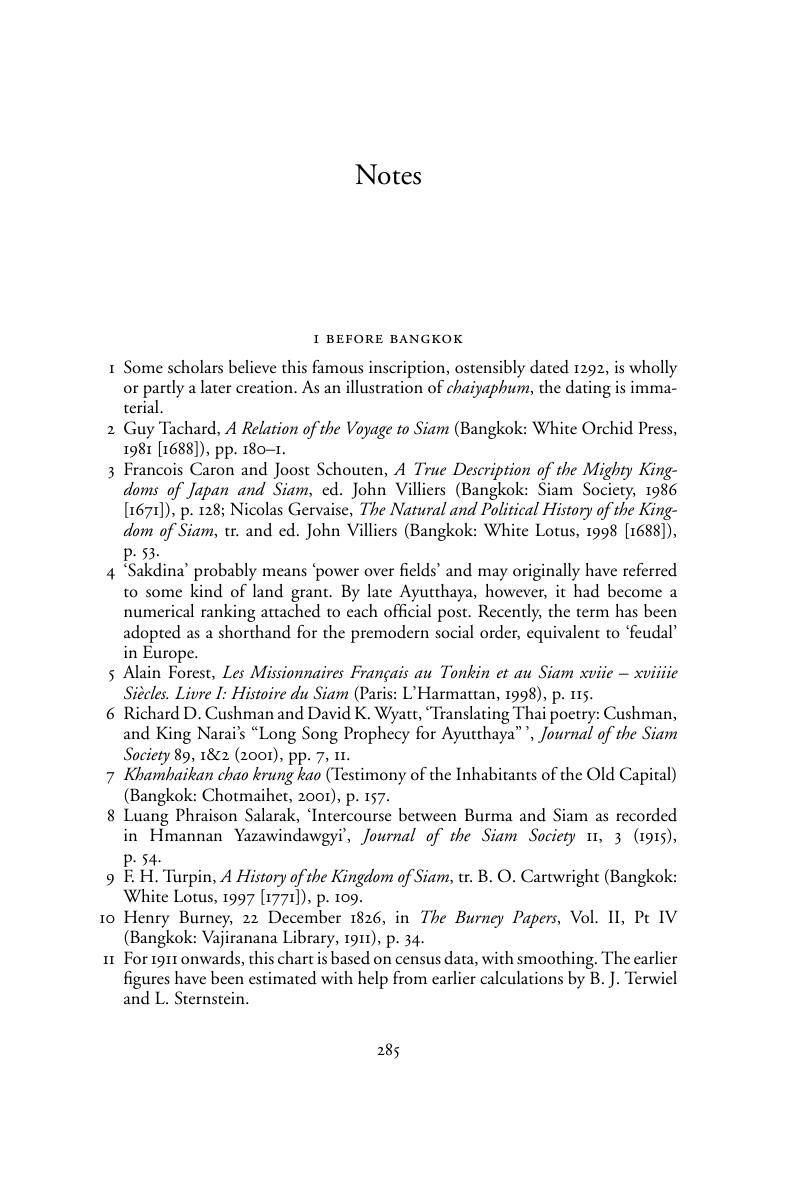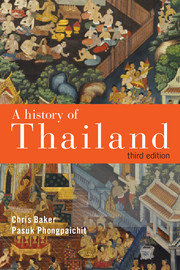Book contents
- Frontmatter
- Contents
- Illustrations
- Preface
- Abbreviations
- Glossary
- Chronology
- 1 Before Bangkok
- 2 The old order in transition, 1760s to 1860s
- 3 Reforms, 1850s to 1910s
- 4 Peasants, merchants, and officials, 1870s to 1930s
- 5 Nationalisms, 1910s to 1940s
- 6 The American era and development, 1940s to 1960s
- 7 Ideologies, 1940s to 1970s
- 8 Globalization and mass society, 1970s onwards
- 9 A political society, 1970s onwards
- Postscript: The strong state and the well-being of the people
- Notes
- Reigns and prime ministers
- Glossary of names
- Readings
- Index
- References
Notes
Published online by Cambridge University Press: 05 August 2014
- Frontmatter
- Contents
- Illustrations
- Preface
- Abbreviations
- Glossary
- Chronology
- 1 Before Bangkok
- 2 The old order in transition, 1760s to 1860s
- 3 Reforms, 1850s to 1910s
- 4 Peasants, merchants, and officials, 1870s to 1930s
- 5 Nationalisms, 1910s to 1940s
- 6 The American era and development, 1940s to 1960s
- 7 Ideologies, 1940s to 1970s
- 8 Globalization and mass society, 1970s onwards
- 9 A political society, 1970s onwards
- Postscript: The strong state and the well-being of the people
- Notes
- Reigns and prime ministers
- Glossary of names
- Readings
- Index
- References
Summary

- Type
- Chapter
- Information
- A History of Thailand , pp. 285 - 297Publisher: Cambridge University PressPrint publication year: 2014



